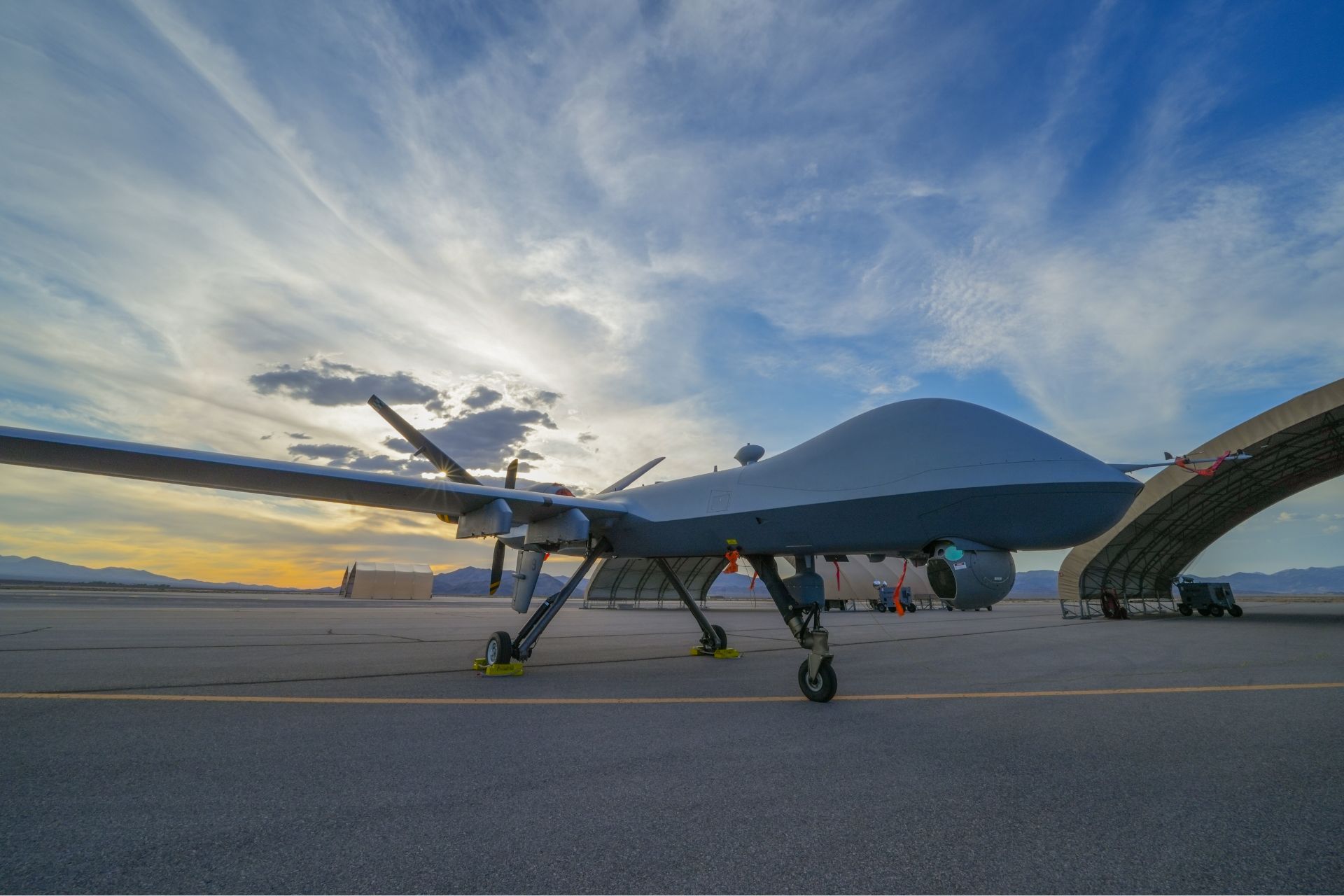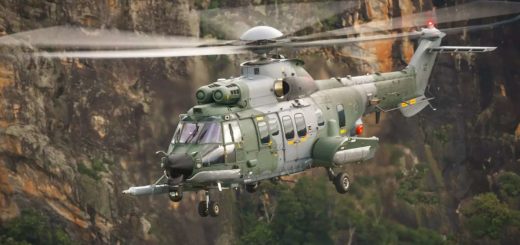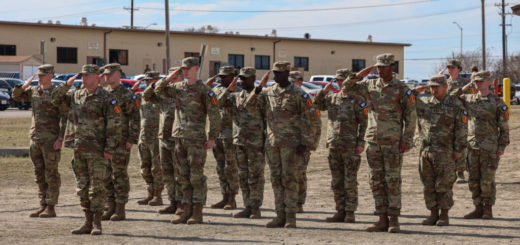US Deploys an MQ-9A Reaper to South Korea to Strengthen Surveillance Against China and North Korea

{loadposition bannertop}
{loadposition sidebarpub}
The United States is preparing to deploy the MQ-9A Reaper drone to the American air base in Gunsan, South Korea, as part of a rotational deployment expected to begin in the second half of 2025. This initiative, marking the first time this aircraft would assume an operational rotational role in South Korea, aims to enhance surveillance and deterrence capabilities in a region where security tensions remain high. The information was provided by a South Korean military source, who stated that the drone is expected to remain on site for several months before being redeployed elsewhere, as reported by The Korea Times.Follow Army Recognition on Google News at this link
The MQ-9A Reaper is a long-range surveillance and strike drone designed to conduct in-depth reconnaissance operations while being capable of engaging ground targets with a versatile range of weapons (Picture source: US DoD)
The Gunsan Air Base, located 178 kilometers south of Seoul, hosts the 7th Air Force of the United States Forces Korea (USFK). Although the Reaper has previously been used in South Korea for exercises and training purposes, this would be the first instance of its deployment under a regular rotational framework. The MQ-9A Reaper is a long-range surveillance and strike drone designed to conduct in-depth reconnaissance operations while being capable of engaging ground targets with a versatile range of weapons. Its extended operational range and high-precision sensors make it a key asset for monitoring North Korean military activities and Chinese operations in the Yellow Sea, also known as the West Sea.
The MQ-9A Reaper is a multi-role combat drone developed by General Atomics Aeronautical Systems for the U.S. Air Force. Primarily designed for intelligence, surveillance, and reconnaissance (ISR) missions, it is also effective in precision strikes against mobile or time-sensitive targets. Equipped with a wide array of multi-spectral sensors and a multi-mode communications suite, the Reaper can undertake a broad range of missions, including close air support, combat search and rescue, laser target designation, convoy escort, raid surveillance, and terminal guidance. Its modular architecture allows for the integration of specific weapon and sensor kits, such as synthetic aperture radar, laser designator, and infrared and electro-optical imaging systems.
The Reaper can carry up to 3,750 kilograms of payload, combining AGM-114 Hellfire laser-guided missiles, GBU-12 Paveway II bombs, GBU-38 JDAM, GBU-49, and GBU-54, providing options against armored or fortified targets with improved precision and limited collateral damage. It has been modified for extended-range operations with external fuel tanks and a water-alcohol injection system, extending its operational range to over 1,600 nautical miles. However, the drone is not equipped with active defense systems or armor, relying instead on operational discretion, high-altitude flight, and remote control via the Remote Split Operations system, which limits personnel exposure by deploying only the necessary teams for takeoff and landing at forward bases.
While U.S. military authorities have confirmed that their priority remains operational readiness and the strengthening of the bilateral alliance with South Korea, they have not officially commented on the planned deployment. This move comes against the backdrop of growing rivalries in Northeast Asia, where the People’s Republic of China is intensifying its military activities in the Yellow Sea, and North Korea continues developing its ballistic and nuclear capabilities.
The forthcoming deployment of the MQ-9A Reaper to South Korea is part of a U.S. strategy to enhance surveillance and deterrence in a region where military balances are particularly fragile. Although the operational details of the rotation remain to be specified, the choice of the Reaper reflects Washington’s intention to maintain close monitoring of regional security dynamics.

{loadposition bannertop}
{loadposition sidebarpub}
The United States is preparing to deploy the MQ-9A Reaper drone to the American air base in Gunsan, South Korea, as part of a rotational deployment expected to begin in the second half of 2025. This initiative, marking the first time this aircraft would assume an operational rotational role in South Korea, aims to enhance surveillance and deterrence capabilities in a region where security tensions remain high. The information was provided by a South Korean military source, who stated that the drone is expected to remain on site for several months before being redeployed elsewhere, as reported by The Korea Times.
Follow Army Recognition on Google News at this link
The MQ-9A Reaper is a long-range surveillance and strike drone designed to conduct in-depth reconnaissance operations while being capable of engaging ground targets with a versatile range of weapons (Picture source: US DoD)
The Gunsan Air Base, located 178 kilometers south of Seoul, hosts the 7th Air Force of the United States Forces Korea (USFK). Although the Reaper has previously been used in South Korea for exercises and training purposes, this would be the first instance of its deployment under a regular rotational framework. The MQ-9A Reaper is a long-range surveillance and strike drone designed to conduct in-depth reconnaissance operations while being capable of engaging ground targets with a versatile range of weapons. Its extended operational range and high-precision sensors make it a key asset for monitoring North Korean military activities and Chinese operations in the Yellow Sea, also known as the West Sea.
The MQ-9A Reaper is a multi-role combat drone developed by General Atomics Aeronautical Systems for the U.S. Air Force. Primarily designed for intelligence, surveillance, and reconnaissance (ISR) missions, it is also effective in precision strikes against mobile or time-sensitive targets. Equipped with a wide array of multi-spectral sensors and a multi-mode communications suite, the Reaper can undertake a broad range of missions, including close air support, combat search and rescue, laser target designation, convoy escort, raid surveillance, and terminal guidance. Its modular architecture allows for the integration of specific weapon and sensor kits, such as synthetic aperture radar, laser designator, and infrared and electro-optical imaging systems.
The Reaper can carry up to 3,750 kilograms of payload, combining AGM-114 Hellfire laser-guided missiles, GBU-12 Paveway II bombs, GBU-38 JDAM, GBU-49, and GBU-54, providing options against armored or fortified targets with improved precision and limited collateral damage. It has been modified for extended-range operations with external fuel tanks and a water-alcohol injection system, extending its operational range to over 1,600 nautical miles. However, the drone is not equipped with active defense systems or armor, relying instead on operational discretion, high-altitude flight, and remote control via the Remote Split Operations system, which limits personnel exposure by deploying only the necessary teams for takeoff and landing at forward bases.
While U.S. military authorities have confirmed that their priority remains operational readiness and the strengthening of the bilateral alliance with South Korea, they have not officially commented on the planned deployment. This move comes against the backdrop of growing rivalries in Northeast Asia, where the People’s Republic of China is intensifying its military activities in the Yellow Sea, and North Korea continues developing its ballistic and nuclear capabilities.
The forthcoming deployment of the MQ-9A Reaper to South Korea is part of a U.S. strategy to enhance surveillance and deterrence in a region where military balances are particularly fragile. Although the operational details of the rotation remain to be specified, the choice of the Reaper reflects Washington’s intention to maintain close monitoring of regional security dynamics.






